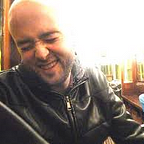Probing, snacking, drumming, laying: Parasitoid wasps beyond the Alien analogies
In explaining the difference between an insect parasite and a parasitoid, a film reference tends to come as standard with the latter.
Parasitoids, often wasps but sometimes flies and other insects, ultimately kill their hosts, rather than living off their continued life. They can do this either by laying their eggs either inside the eggs or soft bodies of other arthropods (endoparasitoids) or on the outside (ectoparasitoids).
In the case of endoparasitoids, the larvae develop unseen on the resources of its dying host before emerging forth into the world to continue the trend. This means that the creature bursting from the human torso in the film Alien serves as a near-perfect illustration of their life cycles.
However, to say that laying eggs is all female parasitoids do when they find a host would be a vast understatement — and this broader palette of behaviours has big implications for their usefulness in pest control.
Destruction is not all reproduction
This fact was recently double-underlined for me whilst working on a story for New Scientist, about the promising signs for possible control of the notorious brown marmorated stink bug using native parasitoids in Italy and elsewhere. The lead researcher took pains to stress that while the parasitism data is very promising, behaviours such as probing and host feeding do a lot to further the effect.
What and what?
Well, probing is pretty much a version of ‘testing the water’ — prodding an egg or larvae with the ovipositor (egg-delivery machinery) to assess whether it’s worth their while actually laying. They do this in conjunction with other behaviours such as ‘drumming’ with their antennae, although tapping out a rhythm, whilst clearly providing useful information, does no damage.
Host feeding is rather more self-explanatory: adult parasitoids generally need to eat, and what better place to tuck in then on the nutritious organism they’ve just found.
Balancing behaviours
It’s pretty clear how host feeding could do non-lethal or even lethal damage, but probing can be pretty deleterious, too. The act can do physical damage, and parasitoids often also inject chemicals at this point to ready the ground for laying an egg, or in some cases, not. Both of these actions, known as non-reproductive effects as they don’t contribute to creating more parasitoids, can negatively affect host development and reproduction.
Anything that damages an insect that might be considered a pest is going to make growers happy, but for the parasitoid itself, there’s a necessity to strike a balance between damage now and reproduction later. Host feeding is shown to increase fertility and longevity in females of species — but probably best not to lay an egg in the same thing you’ve just chowed down on and maimed. Research shows that this dual approach is a bad idea for the survival of young.
Some species have been shown to prefer ovipositing in larger hosts and snacking on smaller — which does make a lot of sense in balancing the short and long games. Meanwhile, parasitoids which hunt down honeydew-producing insects such as aphids have a way round having to make these sorts of choices at all: they eat the fertility-aiding nutrition that comes out of these insects’ rear ends instead.
As well as all this bodily invasion, battery and gorging, the general ‘fear factor’ of parasitoids on the prowl can have its own effect — causing potential hosts to alter their behaviour in a way that might make them less visible to their enemies, but doesn’t benefit their own life chances. This might take the form of moving further away from the most nutritious plants to feed on, for example.
Lots of variables, similar results
All this is without even considering hyperparasitism, where a second or even third parasitoid lays its eggs in the same place but their larvae develop by feeding on the other species of parasitoid rather than the host. Also superparasitism, where so many parasitoids choose a host that there’s no hope of their progeny surviving to maturity. Then there’s ovicide, where some females jab eggs previously laid in their preferred host until they’re ruined. The world of non-stinging wasps is beyond complicated — it would be fairly easy to dedicate a Medium page just to them.
It may come as little surprise that the high-stakes multi-choice games of parasitoids can be quite hard to second-guess. Research has shown that observing non-reproductive behaviours in the lab are a bit of a mixed bag as a means of understanding what these insects are likely to do in the field.
Controlled studies can help predict the amount of time that might be spent drumming and probing, but are also likely to drastically over-estimate the amount of hosts they’ll actually end up laying an egg into. Rejection rates can be high in the field — but again, growers won’t mind as long as pests are ultimately being knocked out of commission. It’s uncanny how often insect behaviour has strong interplay with the agricultural bottom line.
